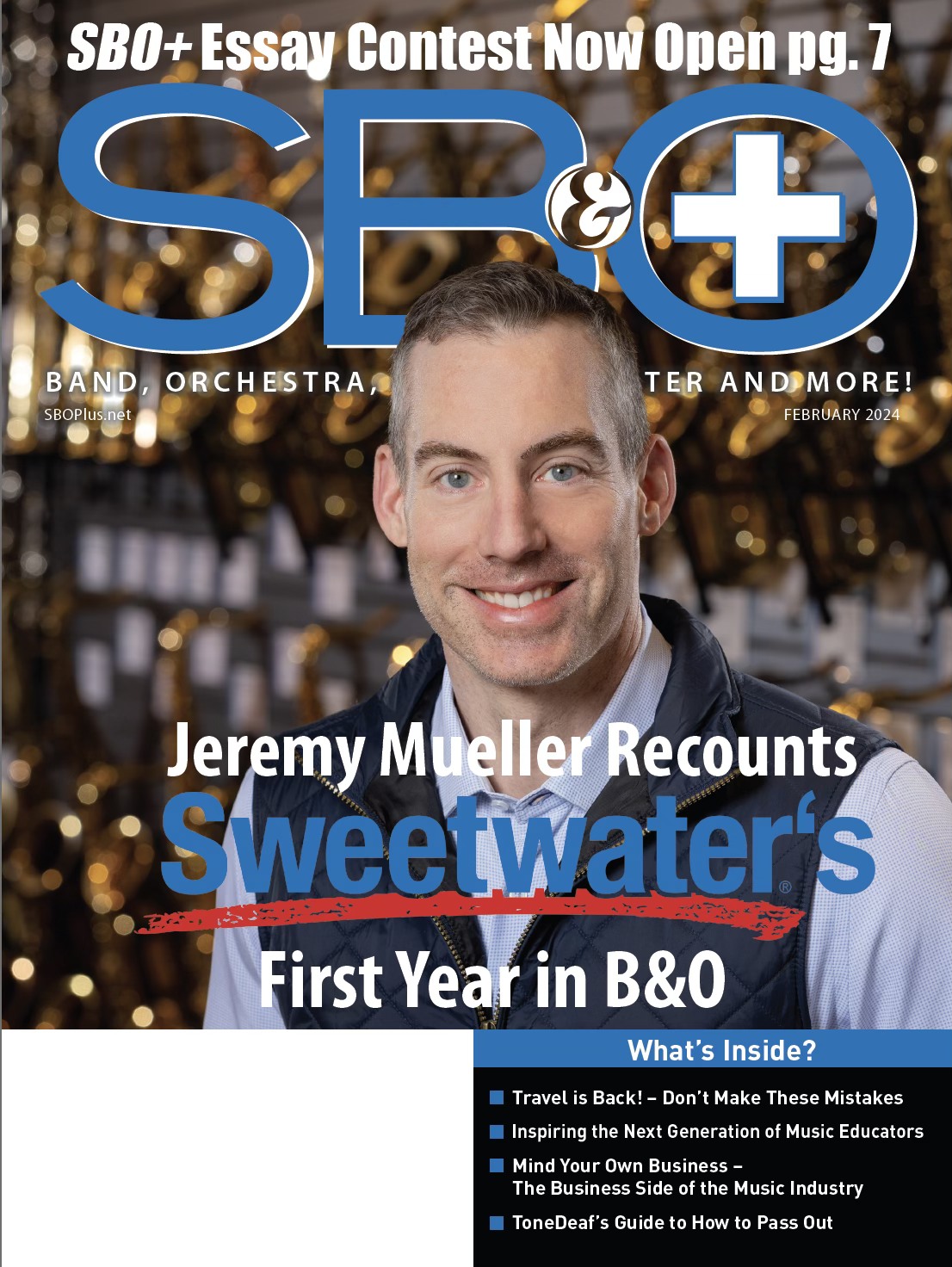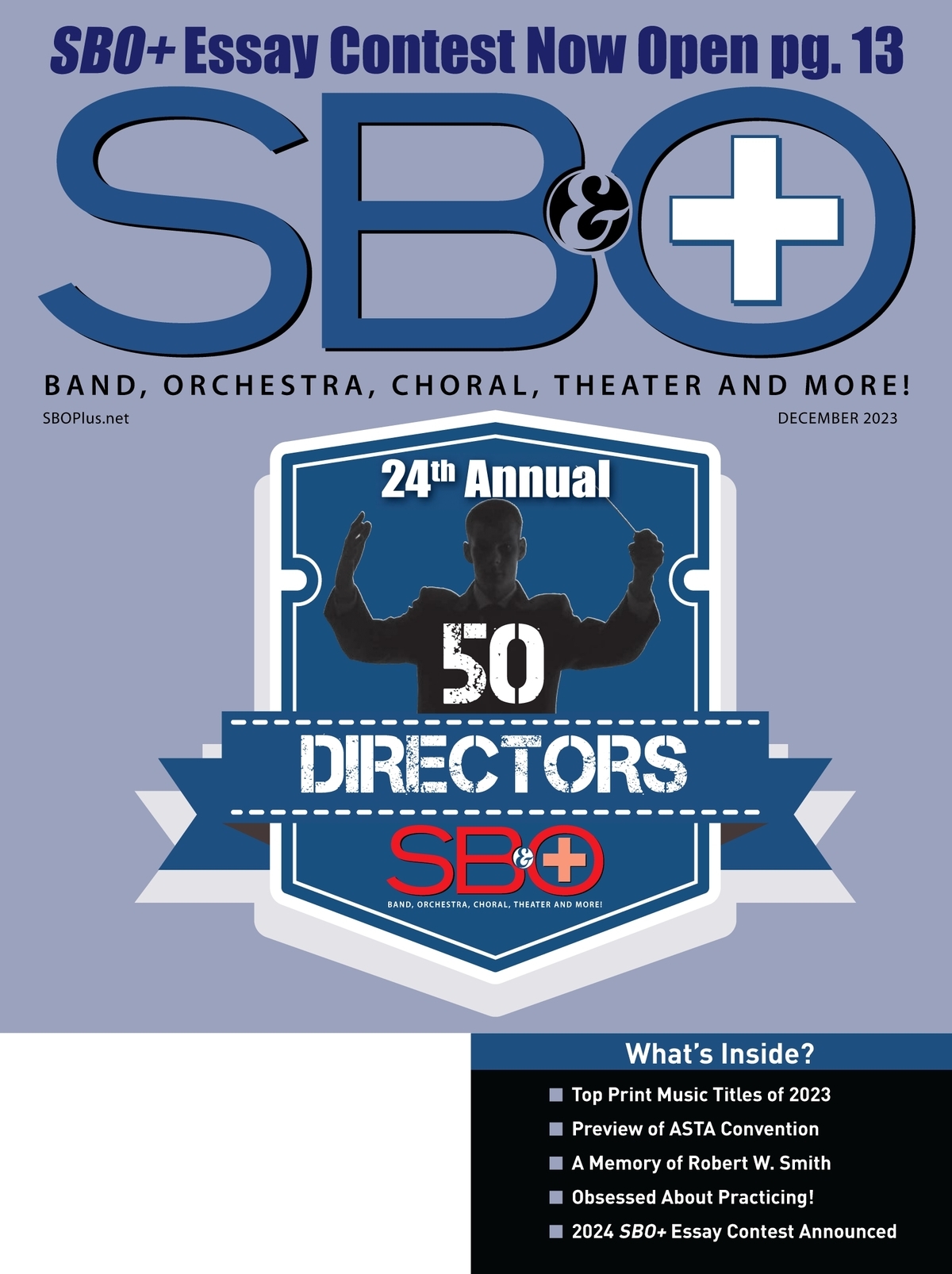EDUCATORS SUBSCRIBE FOR AS LOW AS $0.00! CLICK HERE!
An alarming trend is emerging in music classes in my state of South Carolina: band and string classes are being scheduled for the same classroom, at the same time, with only one teacher assigned to teach both classes simultaneously. Well-meaning administrators, faced with budget and staffing cuts, are trying to save programs by combining classes (“After all, they’re both music classes!”). But the result is that both the band and string students lose their access to a quality, sequential music education. And the result of this plan is often the antithesis of the intent, i.e., the music program is decimated.
Would these same administrators ask a teacher to teach French I and German I in the same room, simultaneously? Or worse yet, French, German and Spanish I (“after all, they are all foreign languages!”)? Probably not, because they know instinctively that the vocabulary, grammar and literature learned in each class are very different. The same is true to a large degree with band and string classes.
Because few administrators come from music classrooms (nationally, some 70 percent were formerly coaches), we have tried to explain this situation so that it makes sense to the non-musician. But if you are facing this threat, or know a colleague who may be, please pass along this list of reasons why administrators should consider any and all other alternatives to “pasteurizing” their instrumental music classes.
Multi-tasking to the Nth Degree
In most South Carolina schools, a beginning band director usually teaches students who are learning anywhere from six to 11 different instruments in the same class at the same time. Each of those instruments requires different fingerings, a different embouchure, and a different characteristic tone. These instruments are pitched in three to four different keys, and read music in two different clefs. Then, there is also the percussion section, where students need to learn several instruments and varying techniques simultaneously. For this reason, some states allow students to start band in small, like-instrument (“homogenous”) groups before they are placed into a full-band (“heterogeneous”) setting.
Most beginning string classes have three to four different instruments that read music in three different clefs. Combining band and string students into one class makes it virtually impossible to attend to each child’s needs and monitor each child’s progress.
The Vocabulary
While there are a number of musical terms that are used by virtually every musician, the terms students must learn first are those pertaining specifically to their chosen instrument. String players must learn terms and symbols that describe bowing techniques, which are foreign to band students; while band students learn breathing and tonguing techniques, and various exercises (like lip slurs), which are basically useless to string students.
Key Signatures
Band students learn to play first in the key of concert B?, a key that suits all band instruments, including what are called the “transposing” instruments, such as the trumpet, clarinet, horn and saxophone (these are the instruments that are based in keys other than C, so that the music they play must be transposed appropriately by the publisher). The next keys usually learned by band students are concert E?, F, and A? – what are often called the “flat keys” because their key signatures are formed with flat signs. The “sharp keys” – whose key signatures are formed with sharp signs – are more difficult for wind instruments, and not begun in method books until level two or later.
String students, on the other hand, begin in the key of D major, a key that is very difficult for those “transposing” band instruments, who would have to negotiate from four to five sharps, and a whole host of alternate fingerings that are not usually taught until much later on.
Beginning strings students would normally learn the keys of G and A next, also “sharp keys.” Sharp keys are especially difficult for clarinetists, who must learn alternate fingerings for a number of notes just to be able to play a basic scale in that key.
While this may be too technical for the non-musician, have them consider asking half of a typing class to learn typing the traditional way (ffff jjj fgf jhj, and so on) and the other half by typing, “The quick brown fox jumps over the lazy dog” over and over!
Textbooks and Repertoire
There are no method books that address beginning band and orchestra together, just as there are no books that teach both French I and German I together. This adds to the music teacher’s already difficult load the task of creating learning materials from scratch that his class can use, if that is even possible.
French students read Voltaire. German students read Goethe. Spanish students read Cervantes. Each language has its own standard, classic literature that students should have the opportunity to experience. The same goes for band and orchestra – they each have their own body of classic repertoire that students should have a chance to learn. Not until very advanced levels of literature are wind instruments included in orchestral repertoire (and then, only a very few) – and virtually never are stringed instruments included in standard band literature.
Are there some acceptable alternatives to this situation? Yes! While meeting every other day is far from ideal, having band and orchestra meeting separately on alternate days is vastly preferable to combining the two classes daily. The best alternative, of course, is to view both band and strings classes as they are defined by our national educational policies – as core academic subjects. Provide adequate staffing (and facilities, and equipment) for both programs. Make it a priority. Give every student access to a quality, sequential music education, and therefore to the many proven benefits of studying musi
Tracy E. Leenman has over 40 years of teaching experience at the elementary through college levels, including instrumental music, choral music, classroom music, private teaching, church choir directing, and teaching conducting and rehearsal techniques.
Currently the owner and CEO of Musical Innovations, a school music retailer in Greenville, S.C., Mrs. Leenman has served on the boards of NASMD and SCMEA, and served for 14 years as the president of the South Carolina Coalition for Music Education. A noted author and guest clinician, she performs regularly with the Palmetto Concert Band.







